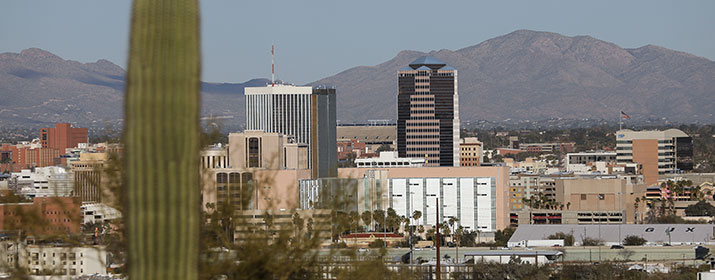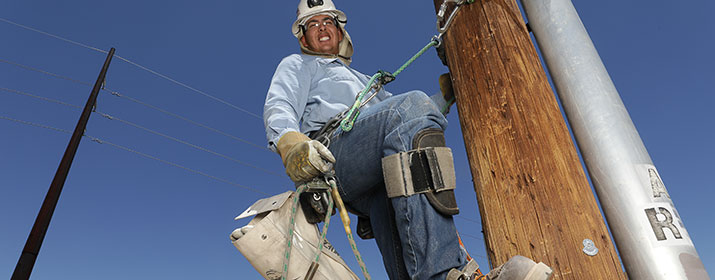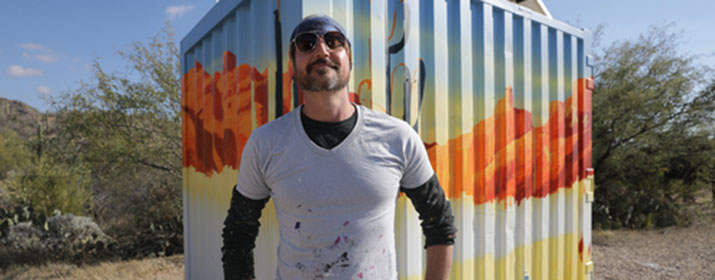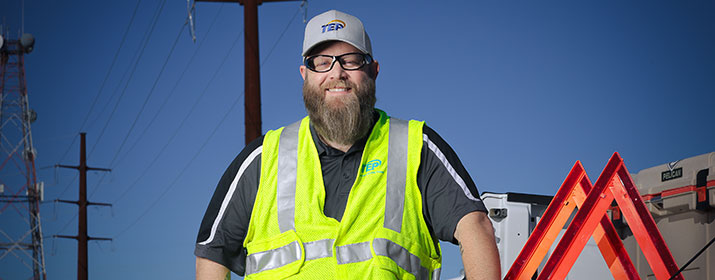
Tucson, Ariz. – Tucson Electric Power (TEP) will accelerate its clean energy expansion to support anticipated growth and maintain affordable, reliable service as the company works toward a new aspirational goal: net zero direct greenhouse gas emissions by 2050.
TEP’s 2023 Integrated Resource Plan (IRP), filed today with the Arizona Corporation Commission (ACC), describes how the company expects to satisfy customers’ increasing energy needs over the next 15 years while reducing carbon dioxide (CO2) emissions and other environmental impacts.
TEP expects to add 2,240 megawatts (MW) of wind and solar generation and 1,330 MW of energy storage by 2038, as well as 400 MW of natural gas turbines to help offset coal plant retirements and support higher use of variable wind and solar energy. This balance was determined to be the most cost-effective way to maintain reliability while achieving an 80 percent reduction in CO2 emissions by 2035, a goal set in TEP’s 2020 IRP.
“Our new resource plan strikes the right balance for our customers, our community and our planet,” said Susan Gray, TEP’s President and CEO. “It supports reliability and affordability while enabling economic growth and keeping us aligned with worldwide efforts to combat climate change.”
While TEP’s 2020 IRP called for 1,000 MW of combined wind, solar and storage additions by 2030, the 2023 IRP boosts that by 50 percent to 1,500 MW to support reliability and affordability amid increasing resource constraints and volatile pricing on the southwestern regional grid. The new timeline also capitalizes on the availability of federal clean energy tax credits that could reduce long-term costs for customers. New systems will include the new 200-MW Roadrunner Reserve battery energy storage system announced last month and expected to be ready for use in 2025.
TEP projects that its customers’ peak energy demands will increase by more than 1 percent per year, on average, over the next 15 years. This estimate accounts for economic growth, energy efficiency efforts, expanded use of electric vehicles and customer investments in distributed solar and storage systems. The portfolio proposed in TEP’s 2023 IRP is designed to meet those needs while accounting for extreme weather and increasing supply constraints on the western regional electric grid.
New Net Zero Target
TEP’s new net zero goal builds on the plan outlined in the 2023 IRP but goes further, reflecting a commitment that will drive the prioritization of future investments and leadership decisions. “To build the clean energy future our community deserves, we must set ambitious and aspirational goals,” Gray said.
Achievement of this aspirational goal will require advancements in technologies such as long-duration storage, carbon capture and sequestration, hydrogen generation and small modular reactors. It also will depend in part on TEP’s success in promoting energy-smart behaviors, like conservation during periods when energy use typically reaches its peak.
“We’re hopeful that our net zero goal inspires customers to join us in this effort, because we’re all in this together,” Gray said. “Smart energy use is the best way to make the most of our clean energy resources and reduce our community’s carbon footprint.”
This month, TEP will launch a campaign that encourages customers to become “net zero heroes” by taking steps to support a sustainable energy future for our community.
From 32 to One
The plan outlined in TEP’s 2023 IRP emerged from 32 potential portfolios developed and analyzed in the company’s resource planning process. One option added only new renewables and storage, for example. Others altered the operating timelines for Units 1 and 2 at TEP’s coal-fired Springervillle Generating Station, which are scheduled to retire in 2027 and 2032. TEP selected the portfolio that was found to support reliability and achieve targeted CO2 reductions at the lowest cost to customers.
The IRP does not determine the location, capacity or other specific details about new power generation projects. Those determinations are made after reviewing bids submitted in response to the all-source requests for proposals that TEP uses to develop new energy resources. Because the process allows developers to propose competing technologies that satisfy performance requirements, it creates opportunities for alternatives that provide comparable reliability at competitive costs.
Development of TEP’s 2023 IRP included consultations with its Resource Planning Advisory Council, a stakeholder group that includes residential and business customers, environmental and low-income advocates, representatives from local governments and educational institutions, and solar installers.
The plan will be reviewed by the ACC in a process that includes opportunities for public comment. For updates on that process and more information about TEP’s 2023 IRP, visit tep.com/2023IRP.
TEP provides safe, reliable electric service to more than 445,000 customers in Southern Arizona. For more information, visit tep.com. TEP and its parent company, UNS Energy, are subsidiaries of Fortis Inc. (TSX/NYSE: FTS), which owns utilities that serve more than 3 million customers across Canada and in the United States and the Caribbean. For more information, visit fortisinc.com.
News Media Contact:
Joseph Barrios
(520) 884-3725
jbarrios@tep.com






